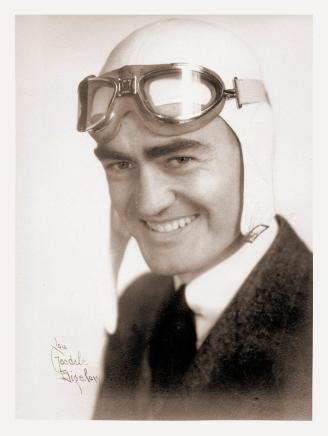In a residential area in Aurora, Colo., backed up by Westerly Creek, sits the distinctive Stanley Marketplace. You can’t miss the giant “Stanley” sign, the expanse of converted industrial space, the sense that something significant happened here. Where backyard barbecues are now the norm, rocket motors and experimental jets once blazed the skies above.
Stapleton International Airport is long gone, replaced by the larger and more modern Denver International Airport to the northeast, but certain remnants remain. Stanley Marketplace has taken over the 140,000-square-foot factory originally owned by Stanley Aviation Corp., the largest employer in Aurora at the time. It’s been redeveloped into a unique community of more than 50 businesses, offering local food, drink, crafts, event space and more.
While the developers behind the marketplace, Flightline Ventures, were careful to honor the history, it raises a question: Who was the man behind the name?
The answer could fill several books. In short, Robert M. Stanley was a pivotal American test pilot and aeronautical engineer involved in some of the most significant developments in aviation over the past century. Stanley made the maiden test flight of America’s first jet fi ghter, worked on the original series of supersonic aircraft and led the development of innovative ejection seats, which saved numerous pilots’ lives.
ghter, worked on the original series of supersonic aircraft and led the development of innovative ejection seats, which saved numerous pilots’ lives.
From 1961-62, he wrote his memoirs and published the anecdotes in a monthly company publication called the “Stanley Capsule.” In the first installment he starts out, “As I look back over the past thirty years, in which I have continuously been engaged in the aviation industry, I am forced to the conclusion that I was born at one of the most propitious times for the pursuit of such a career. I vividly recall the airplanes used in World War II, and have lived to see airplanes of my own design surpass 2,000 miles per hour.”
Stanley was born in El Reno, Okla., in 1912. He would go on to study aeronautical engineering at the California Institute of Technology. He received his naval aviator wings in 1936 and one of his first assignments was searching for the missing Amelia Earhart the following year. While serving in the Navy, Stanley built a unique metal glider with a V-shaped tail and later shocked the soaring community with its high performance. The Nomad is now on display at the Steven F. Udvar-Hazy Center in Virginia as part of the National Air and Space Museum’s collection.
After his discharge from service, Stanley held a series of positions within the aviation industry, most notably with Bell Aircraft Corp. in Elmira, N.Y. While at Bell during World War II, Stanley was involved in a secret program to develop a jet fighter, the XP-59A, and took the airplane on its first test flight over the Mojave Desert.
While Stanley rose through the corporate ranks at Bell, he developed early supersonic aircraft; the X-1, which was flown to fame by Chuck Yeager when he broke the sound barrier, and the X-2. Stanley pioneered the aerial launch and retrieval system that would later be used for the X-15 program, which provided valuable research for space flight.
Stanley left Bell in 1948 to launch his own company in the basement of his home in Buffalo, N.Y. The company soon outgrew its space and Stanley Aviation Corp. was eventually moved to Colorado. During the early phases of the Cold War, the military was obsessed with speed in order to achieve a tactical advantage and deliver bombs in a hurry. One of the company’s top concerns was building downward ejection seats and other escape systems to allow pilots to rescue themselves at supersonic speeds. Stanley also developed a lower speed escape system that was credited with saving more than 150 lives during the Vietnam War.
Stanley remained president of Stanley Aviation until his death in 1977. A company airplane carrying Stanley and several family members was returning from a Caribbean vacation and broke up off the coast of Fort Lauderdale, Fla., due to severe wind shear. He was enshrined in the National Aviation Hall of Fame among countless other honors.
In his free time, Stanley loved spending time in Colorado’s great outdoors. His name, of course, lives on.
To learn more about Stanley, head to the Aurora History Museum and check out an exhibit, then swing by Stanley Marketplace. The marketplace has an experience, similar to a scavenger hunt, where visitors can explore history. To learn more about aircraft from the era and ejection seat technology, visit the Wings Over the Rockies Air & Space Museum in nearby Lowry.
Photo credit: Hip Hop Photo (top)



